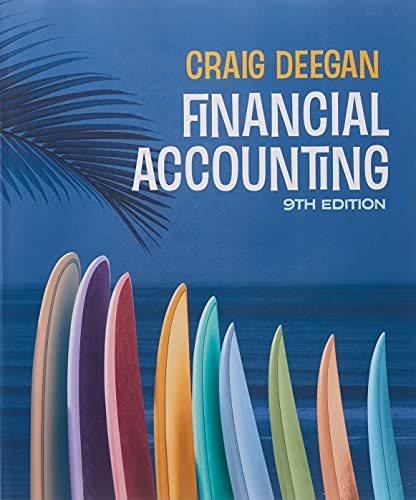Question 1 Many organisations measure their property plant and equipment using the historical cost method. Critically evaluate the historical cost method of measurement. Consider the
Question 1 Many organisations measure their property plant and equipment using the historical cost method. Critically evaluate the historical cost method of measurement. Consider the advantages and disadvantages of using historical cost, including why management may prefer to measure their property, plant and equipment using historical cost.
Question 2 The use of fair value to measure an organisations asset's is becoming an increasingly popular method for organisations to measure their assets. Critically evaluate the fair value method of measurement. Consider the advantages and disadvantages of using fair value, and whether or not using fair value produces information which is more faithfully represented.
Question 3 Discuss the various methods of measurement available for accounting purposes, evaluate the advantages and disadvantages of each method. Critically evaluate the impact of measurement choice on the quality of accounting information.
Question 4 The practice of financial accounting is quite heavily regulated within Australia. Critically evaluate the regulatory environment of accounting within in Australia considering the arguments for and against the regulation of financial accounting.
Question 5 As explained within Deegan et al (2020) accounting standards prohibit goodwill from being subject to amortisation. Rather, there is a requirement that goodwill be subject to impairment testing. Refer to Petersen and Plenborg (2010, p.420). Required Discuss the reasons why accounting standard setters have chosen to subject goodwill to impairment testing rather than amortisation. Provide a clear argument as to why you agree or disagree with the requirement of impairment testing of goodwill.
Question 6 Sustainability reporting is a relatively new form of Corporate Social Responsibility reporting (CSR). Despite the potential benefits of sustainability reporting, there is no comprehensive regulatory framework to deal with it. Critically evaluate the guidelines for sustainability reporting and consider should financial reporting even be the mechanism for reporting on sustainability?
Question 7 The conceptual framework provides guidance to standard setters. The conceptual framework prescribes the nature, function and limits of financial accounting and reporting, with a central goal of consensus. Consider how the conceptual framework defines and recognises the elements of financial statements, critically evaluate the advantages and disadvantages of the conceptual framework and the guidance, if any, the conceptual framework has provided to the measurement issue.
Question 8 Provide an in-depth report on accounting for intangible assets. Consider the types of assets that can be considered intangible. Discuss the categories of intangible assets and when under AASB 138 expenditure on intangible assets should be recognised as an expense or as an asset. Furthermore, demonstrate an understanding of when intangible assets should be systematically amortised or subject to impairment testing.
Question 9 The lower of cost or net realisable value concept means that inventory should be reported at the lower of its cost or the amount at which it can be sold. Define net realisable value and discuss how you would determine the lower of cost or net realisable value. Discuss when you would expect net realisable value to be lower than cost and what types of industries are likely to use the lower of net realisable valueandfairvalue.
Step by Step Solution
There are 3 Steps involved in it
Step: 1
To effectively answer these questions each one requires a comprehensive analysis of the respective accounting topics Below are brief outlines for addressing each question Question 1 Historical Cost Me...
See step-by-step solutions with expert insights and AI powered tools for academic success
Step: 2

Step: 3

Ace Your Homework with AI
Get the answers you need in no time with our AI-driven, step-by-step assistance
Get Started


